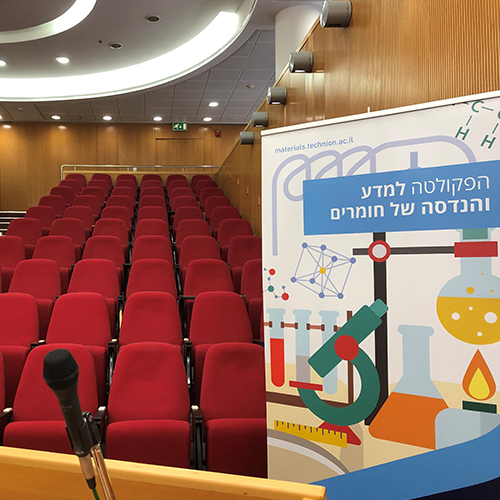
Mr. Zhao Liang - M.Sc. candidate
04/02/2024
אודיטוריום ע"ש דויד וואנג, בניין מידן, קומה 3
14:30
The Cu-Au alloys represent one of the best-studied systems in Physical Metallurgy, yet it turns out that they still hold many surprises at the nanoscale. This research is focused on the mechanical properties of Cu and Cu-Au nanoparticles fabricated by solid state dewetting, and on kinetic processes in thin Cu-Au bilayer films during annealing.
“Smaller is Stronger”
Mechanical properties and deformation mechanisms of defect-free Cu nanoparticles are investigated by combining in-situ microcompression tests with atomistic simulations. The compressive strength of the particles larger than about 350 nm in diameter is strongly size-dependent, whereas the strength of smaller particles saturates near its theoretical limit. The experiments and simulations reveal the twinning mechanism of the lattice rotation from [111] to [110] for heavily deformed Cu nanoparticles, leading to the new grain formation.
“Precipitate Weakening”
Trend-breaking mechanical behavior of solid solutions and long-range atomic order weakening were observed in defect-free faceted nanoparticles of Cu-Au alloys. The degree of long-range atomic order was quantified by XRD and TEM. Compressive strength of fully ordered Cu3Au nanoparticles is very similar to that of their fully disordered counterparts, whereas the partially ordered Cu3Au nanoparticles larger than 500 nm in size exhibited a significant drop in strength.
“Dewetting Under the Carpet”
Intermixing of Cu-Au bilayer thin film resulted in formation of blisters and suspended membranes. Microstructure was characterized and formation mechanisms were discussed.


